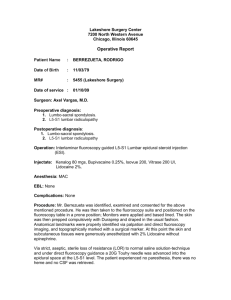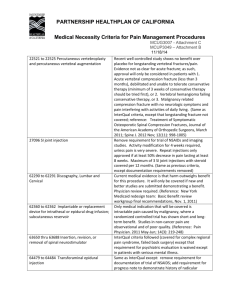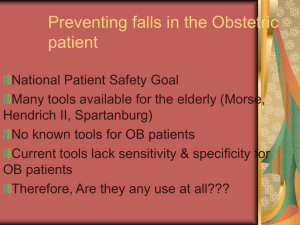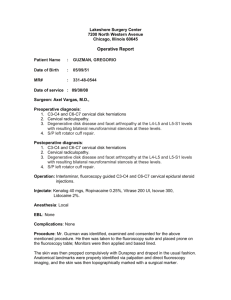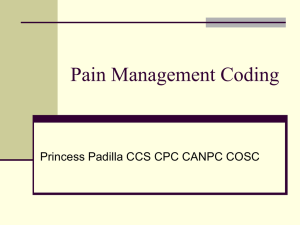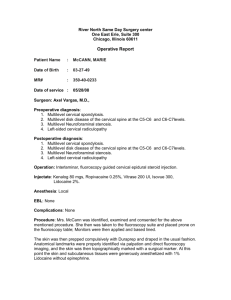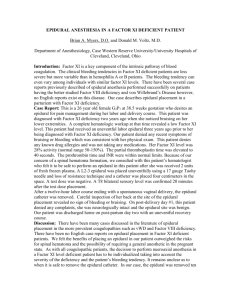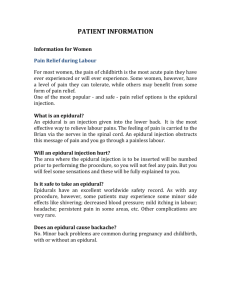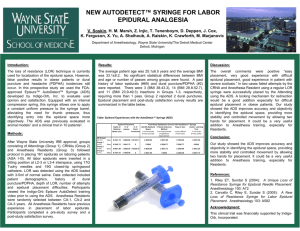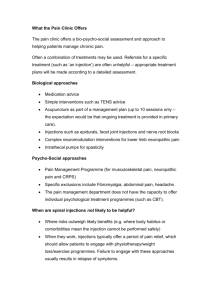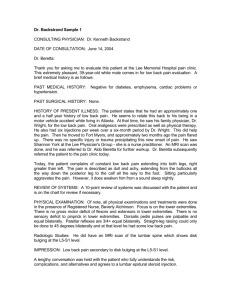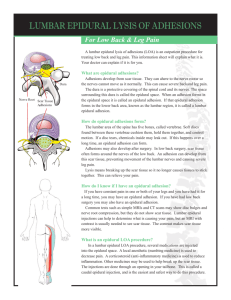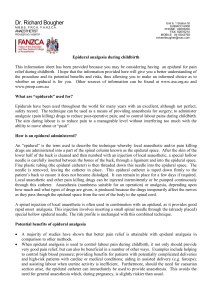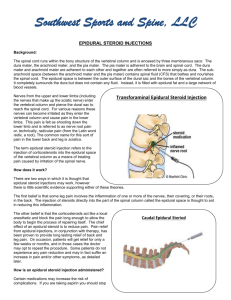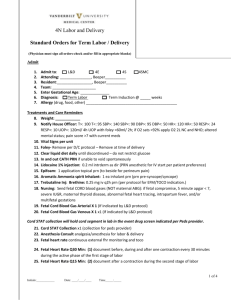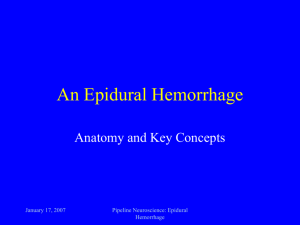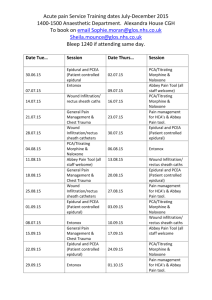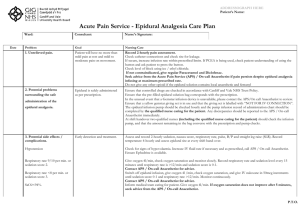Fluoroscopic-Guided Epidural Injection Training
advertisement
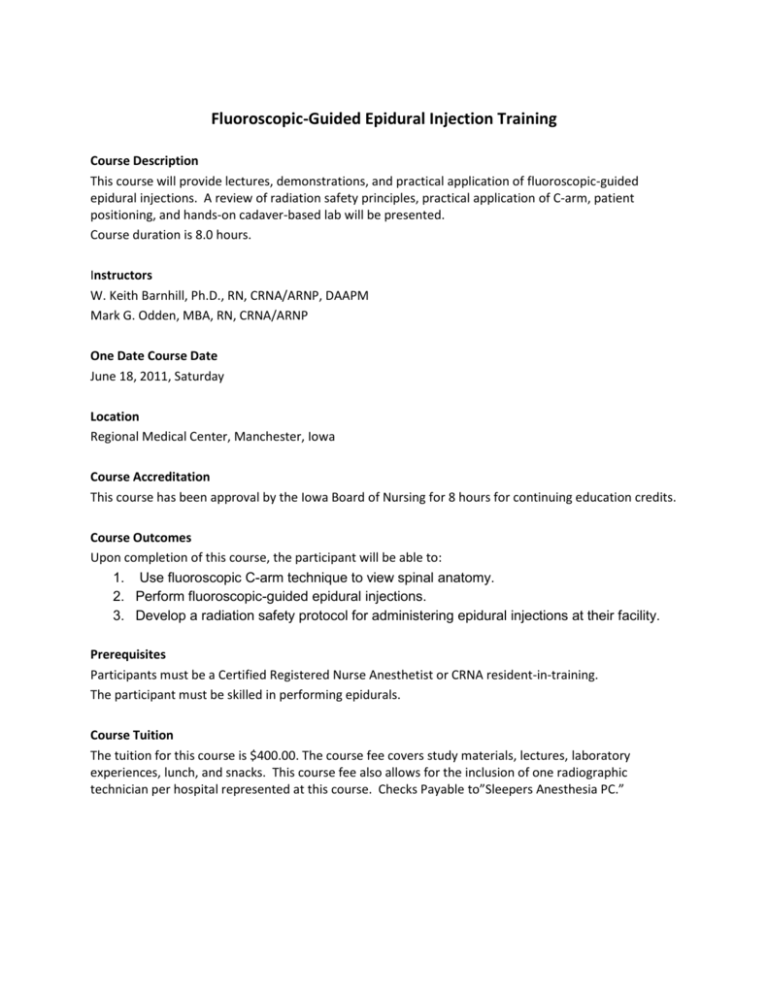
Fluoroscopic-Guided Epidural Injection Training Course Description This course will provide lectures, demonstrations, and practical application of fluoroscopic-guided epidural injections. A review of radiation safety principles, practical application of C-arm, patient positioning, and hands-on cadaver-based lab will be presented. Course duration is 8.0 hours. Instructors W. Keith Barnhill, Ph.D., RN, CRNA/ARNP, DAAPM Mark G. Odden, MBA, RN, CRNA/ARNP One Date Course Date June 18, 2011, Saturday Location Regional Medical Center, Manchester, Iowa Course Accreditation This course has been approval by the Iowa Board of Nursing for 8 hours for continuing education credits. Course Outcomes Upon completion of this course, the participant will be able to: 1. Use fluoroscopic C-arm technique to view spinal anatomy. 2. Perform fluoroscopic-guided epidural injections. 3. Develop a radiation safety protocol for administering epidural injections at their facility. Prerequisites Participants must be a Certified Registered Nurse Anesthetist or CRNA resident-in-training. The participant must be skilled in performing epidurals. Course Tuition The tuition for this course is $400.00. The course fee covers study materials, lectures, laboratory experiences, lunch, and snacks. This course fee also allows for the inclusion of one radiographic technician per hospital represented at this course. Checks Payable to”Sleepers Anesthesia PC.” Course Materials Articles: American College of Radiology (2001). ACR technical standard for management of the use of radiation in fluoroscopic procedures. ACR, Amended 2006. Candido, K.D., Raghavendra, M.S., Chinthagada, M. etal (2008). A Prospective evaluation of iodinated contrast flow patterns with fluoroscopically guided lumbar epidural Steroid injections: The lateral parasagittal interlaminar epidural approach versus the transforaminal epidural approach. Anesth & Analg, 106 (2): 638-644. Fink, G.E. (2009). Radiation safety in fluoroscopy for neuraxial injections. AANA Journal, 77(4): 265269. Goodman, B.S., Posecion, L.W., Mallempati, S. & Bayazitoglu, M. (2008). Complications and pitfalls of lumbar interlaminar and transforaminal epidural injections. Curr Review Musculoskeletal Medicine, (1): 212-222. Mahadevappa, M. (2001). Fluoroscopy: patient radiation exposure issues. Radiographics, (21): 10331045. Learner Outcomes Upon completion of this course, participants will be able to: 1. Perform fluoroscopic-guided epidurals. 2. Provide direction to a radiological technologist on proper alignment to optimize fluoroscopic anatomical views. 3. Select appropriate equipment to perform fluoroscopic-guided epidurals. 4. Describe the indications, contraindications, and appropriate use of fluoroscopy. 5. List the indications and contraindications for an epidural steroid injection. 6. Perform a thorough pain-focused evaluation of a patient sent for an epidural injection. Course Outline 0800-0815 Welcome and review of present state of Iowa practice issues related to the use of fluoroscopy. 0815-0900 The clinical application of fluoroscopy and epidurals. 0915-1015 Fluoroscopic use and radiation safety principles 1015-1115 Fluoroscopic review of spinal anatomy 1115-1200 Fluoroscopic-guided epidurals: interlaminar and caudal approaches 1230-1430 Cadaver lab-Part One 1445-1600 Cadaver lab –Part Two 1600-1630 Post-test and panel discussion Contact W. Keith Barnhill or Mark Odden at 563-927-3232, or reserve your spot at modden@ialc-oas.com. Hotel accommodations available in Manchester and Independence, IA.
